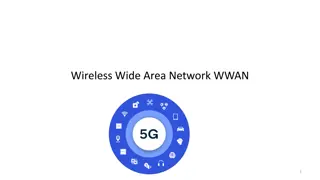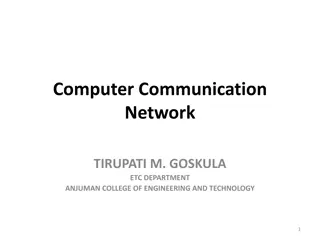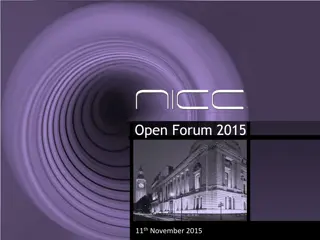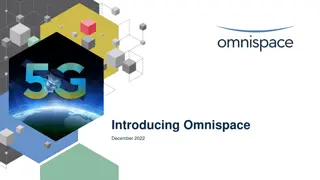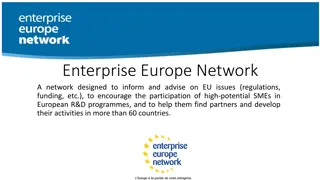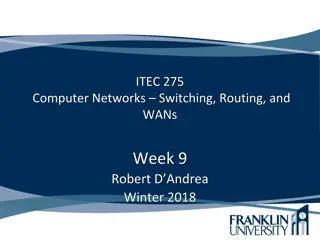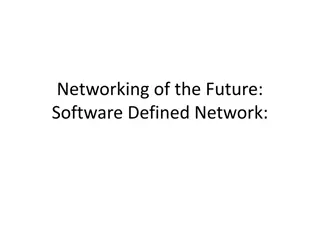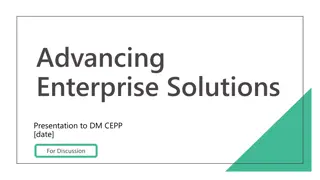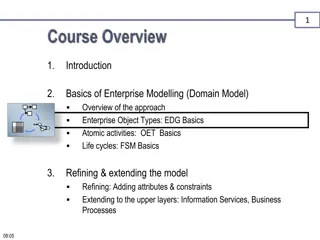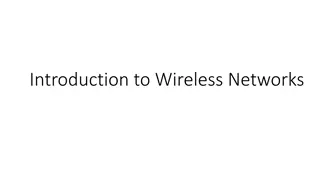Importance of Network Control and Management for Enterprise Networks
Enterprise networks require effective control and management to ensure high reliability, security, and efficiency. Traditional methods may lead to complexities and misconfigurations, highlighting the need for innovative solutions like Ethane with its fundamental principles and design. Explore how Ethane works to address the challenges faced by modern enterprise networks.
Download Presentation

Please find below an Image/Link to download the presentation.
The content on the website is provided AS IS for your information and personal use only. It may not be sold, licensed, or shared on other websites without obtaining consent from the author.If you encounter any issues during the download, it is possible that the publisher has removed the file from their server.
You are allowed to download the files provided on this website for personal or commercial use, subject to the condition that they are used lawfully. All files are the property of their respective owners.
The content on the website is provided AS IS for your information and personal use only. It may not be sold, licensed, or shared on other websites without obtaining consent from the author.
E N D
Presentation Transcript
ETHANE: TAKING CONTROL ETHANE: TAKING CONTROL OF THE ENTERPRISE OF THE ENTERPRISE VAMSHI REDDY KONAGARI
Why Network Control and Management is Why Network Control and Management is Important for Important for enterprise networks? enterprise networks? Enterprise networks are large, they run a variety of apps and protocols Need high reliability and security constraints 62% of network downtime in multi-vendor networks comes from human errors and 80% spent on maintenance and operations. Traditional ways to manage networks Middle boxes to intercept traffic and enforce policies Adding new layer of protocols on top of existing protocols to audit and manage hosts, networking devices using VLANS, ACLs, etc.
Problems with traditional ways to manage Problems with traditional ways to manage networks networks Complexity of distributed protocols Misconfigurations No global view of network Traffic can accidentally flow around middle boxes Traditional management tools hide the complexity not reduce it.
Ethanes Fundamental principles Ethane s Fundamental principles Inspires from the 4D paper. The network should be governed by policies declared over high-level names Users, hosts, access points instead of network addresses Policy should determine the packet flow Which path to take low-latency, high bandwidth, etc. Which services to hit Firewall, NAT, proxy, etc. (Also called Service chaining) Network should enforce a strong binding between a packet and its origin. Consistent binding between network addresses and hosts even if host changes its network address
Ethanes Design Ethane s Design Controller and Ethane switches
How Ethane works? How Ethane works? 5 basic activities Registration Hosts, users and switches register to the controller Bootstrapping Tree with controller as root Switches connect to controller to setup secure channel Authentication Controller intercepts DHCP setup packets - associates host to IP, IP to MAC, MAC to switch port mappings. Flow Setup Controller decides whether to allow or deny flows Forwarding If a flow is allowed, rules to allow traffic are installed on switches
How Ethane works? How Ethane works?
Example of Ethane deployment Example of Ethane deployment
Ethane Switch Ethane Switch L2 - Dumb switches - no STP, L2 Learning, VLAN support L3 - Dumb routers - no OSPF, RIP, ACLs, NAT, etc. Flow tables and entries Match and action pairs with per-flow stats Drop, flood, send it to a port or send it to controller Queue packets in a particular queue Address translations Logical switch manager A process inside a switch to talk to controller to update link status, neighbours, etc.
Ethane Controller Ethane Controller
Replicating the controller: Fault Replicating the controller: Fault- -tolerance and scalability scalability tolerance and Central controller - bottleneck Possible approaches Warm standby - Controllers monitor each other and do failover - need to synchronize bindings, etc. - network state is eventually consistent - might lose some info on primary failure. Cold standby - backup controllers are waiting to take over the control. Switches do the failover. Fully-replicated controllers - requests from switches are spread over multiple controllers using some hashing - round robin. Weak semantics for consistency.
Policy Language Policy Language Policy language to enforce network wide policies [(usrc="bob") (protocol="http") (hdst="websrv")]:allow; Conditions are conjunction of zero or more predicates followed by an action. Actions include allow, deny, outbound only (NAT), waypoints If two or more rules match with conflicting actions, then highest priority rule wins
Prototype and deployment Prototype and deployment Single PC based controller 19 switches - Ethane switches (software and hardware), Ethane access points 300 hosts - Laptops, printers, VOIP phones, desktop workstations, servers
Frequency of flow setup requests Frequency of flow setup requests Peak of 750 flows per second
Flow request rate Flow request rate Two data sets 8000 hosts - LBL 22,000 hosts Stanford
Performance during failures Performance during failures
Active flows in switches Active flows in switches
Shortcomings Shortcomings Broadcast and service discovery ARP, OSPF discovery Leads to large number of flows Application layer routing If A can talk to B, but not to C. B can talk to C. B can relay A's traffic to C --- Ethane can't detect this Spoofing Ethernet addresses
Conclusion Conclusion Switches are best when they are dumb Ethane makes networks much easier to manage Single controller can manage 10,000 machines Adding new users, switches, protocols, routing algorithms is very easy Service chaining using ethane waypoints Defining policies at a centralized location rather than distributed




